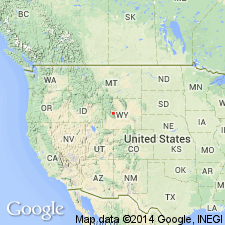
- Usage in publication:
-
- Castle Creek soil*
- Modifications:
-
- Named
- Dominant lithology:
-
- Soil
- AAPG geologic province:
-
- Paradox basin
Summary:
Name applied to a distinctive moderately developed zonal soil formed on upper member or on lower member of Beaver Basin formation (new), or locally on older rocks. Type locality is at confluence of Castle and Placer Creeks in Castle Valley, NW1/4 SW1/4 sec 8, T25S, R23E, Grand Co, UT, Paradox basin. Is older than lower member of Gold Basin formation (new). Correlation chart, soil profiles, facies distribution map. Occurs as: 1) Brown Podzolic facies between 8,000 and 11,000 ft elev. with an A horizon 6 in thick and B horizon 10 to 22 in thick, brown, weak fine crumb or fine subangular blocky structure; 2) Brown Forest facies between 7,200 and 8,000 ft elev. with 12 to 18 in thick gray, weak to fine granular or blocky A horizon, 4 to 10 in brown, fine granular to blocky B horizon, and 1-2 ft thick brown Cca horizon; 3) Brown soil facies between 5,400 and 7,200 ft elev. with 1 ft thick gray weak blocky structure A horizon, with 6 to 12 in thick brown B horizon, and 24 to 36 in thick, brown Cca horizon; 4) Sierozem facies which occurs below 5,400 ft elev. with a gray to brown structureless A horizon, B horizon lacking, and 3 to 4 ft thick brown to pink Cca horizon. Recent age.
Source: GNU records (USGS DDS-6; Denver GNULEX).
For more information, please contact Nancy Stamm, Geologic Names Committee Secretary.
Asterisk (*) indicates published by U.S. Geological Survey authors.
"No current usage" (†) implies that a name has been abandoned or has fallen into disuse. Former usage and, if known, replacement name given in parentheses ( ).
Slash (/) indicates name conflicts with nomenclatural guidelines (CSN, 1933; ACSN, 1961, 1970; NACSN, 1983, 2005, 2021). May be explained within brackets ([ ]).

